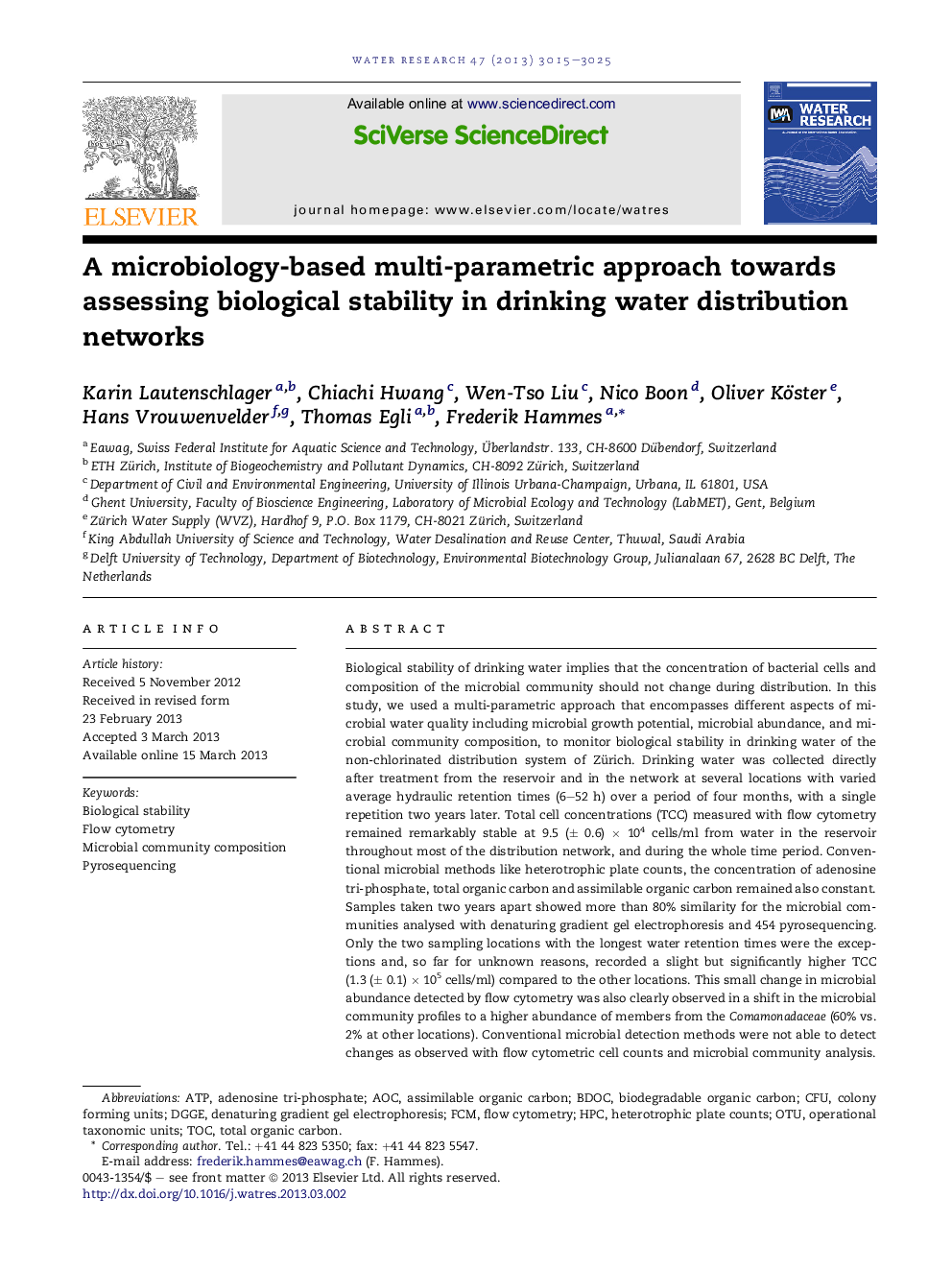| کد مقاله | کد نشریه | سال انتشار | مقاله انگلیسی | نسخه تمام متن |
|---|---|---|---|---|
| 4482117 | 1316848 | 2013 | 11 صفحه PDF | دانلود رایگان |

• Biological stability assessed with conventional and advanced methods.
• Detailed community analysis of non-chlorinated drinking water.
• A high abundance of candidate phyla discovered.
• Concomitant changes in cell concentrations and community composition.
• Advanced methods elucidate events unseen with conventional methods.
Biological stability of drinking water implies that the concentration of bacterial cells and composition of the microbial community should not change during distribution. In this study, we used a multi-parametric approach that encompasses different aspects of microbial water quality including microbial growth potential, microbial abundance, and microbial community composition, to monitor biological stability in drinking water of the non-chlorinated distribution system of Zürich. Drinking water was collected directly after treatment from the reservoir and in the network at several locations with varied average hydraulic retention times (6–52 h) over a period of four months, with a single repetition two years later. Total cell concentrations (TCC) measured with flow cytometry remained remarkably stable at 9.5 (± 0.6) × 104 cells/ml from water in the reservoir throughout most of the distribution network, and during the whole time period. Conventional microbial methods like heterotrophic plate counts, the concentration of adenosine tri-phosphate, total organic carbon and assimilable organic carbon remained also constant. Samples taken two years apart showed more than 80% similarity for the microbial communities analysed with denaturing gradient gel electrophoresis and 454 pyrosequencing. Only the two sampling locations with the longest water retention times were the exceptions and, so far for unknown reasons, recorded a slight but significantly higher TCC (1.3 (± 0.1) × 105 cells/ml) compared to the other locations. This small change in microbial abundance detected by flow cytometry was also clearly observed in a shift in the microbial community profiles to a higher abundance of members from the Comamonadaceae (60% vs. 2% at other locations). Conventional microbial detection methods were not able to detect changes as observed with flow cytometric cell counts and microbial community analysis. Our findings demonstrate that the multi-parametric approach used provides a powerful and sensitive tool to assess and evaluate biological stability and microbial processes in drinking water distribution systems.
Figure optionsDownload high-quality image (170 K)Download as PowerPoint slide
Journal: Water Research - Volume 47, Issue 9, 1 June 2013, Pages 3015–3025